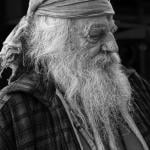This is the second of the two-part post I started yea\sterday about the Taj and the temples near it.
The city of the Taj – the peerless monument – is situated on the right bank of the Jumna river* Agra is an ancient but romantic city and was the capital of the Moghul Empire at the time of Akbar and Shah Jahan, The ancient monuments here relate the entire history of Moghul glory. In 1803 it passed into British possession.
FATEHPUR SIKRI; Twenty miles away from Agra and approachable by car or by train lies the abandoned city built by Akbar. The ruins can be reached from Fatehpur Sikri railway station. There is a Dak Bungalow there and visitors can arrange for meals by previous intimation. The city was founded by the Emperor m 1569 with the intention of making it his capital, but owing to lack of water supply it was deserted within 20 years of its construction. Fatehpur Sikri contains a mass of imposing buildings of marble and red sandstone, and the mosque, palaces and shrines there will repay a a visit. The Gateway of Victory is the highest gateway in India, being 176 feet high.
It was erected by Akbar to commemorate his victory in war, Jama Masjid, this fine mosque, is elaborately carved and is the largest building here Panch Mahal, a five-storeycd building of remarkable design. Diwan-i-Khas, or the Hall of Puvate Audience, is a red sandstone edifice. Maryan’s House and Palace of Jodh Bai, both of which are richly ornamented and are remarkable for their carvings. Besides these main buildings of interest there is Salim Chisti’s Tomb, House of Birbal, Hu an Minar, or Elephant Tower, Khas Mahal and many other structures through which the visitor will be delighted to wander.
Agra is served by the Indian Railways connecting it with Mumbai, Kolkata and other towns. There are many railway stations in Agra, but generally visitors travelling by from Mumbai alight at Agra cantonment station and those travelling from Calcutta or Chennai at Agra Fort station. The modern city of Agra comprises the military cantonment on the south, the civil station on the northwest, the fort on the north-east and the main city in the centre.
It is the headquarters of the division and district. The city is beautiful and well built and has several public buildings, schools and colleges. Agra is famous for its manufactures of marble carvings and inlaid work, carpets and also for gold and silver embroideries. Shoe manufacture, which is followed as a cottage industry, gives employment to thousands of people. Tourism is however the biggest employer.










